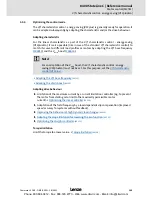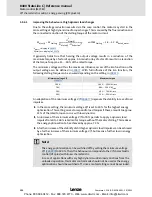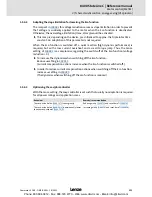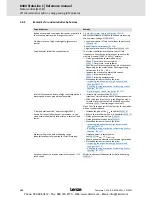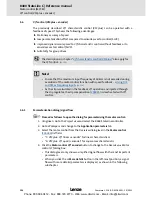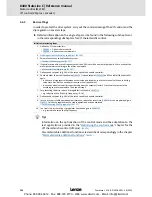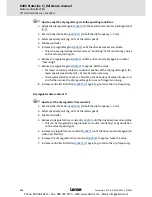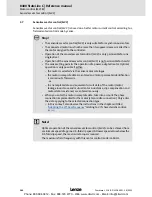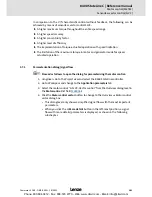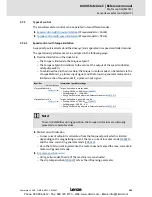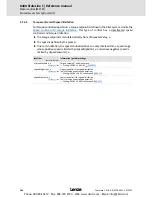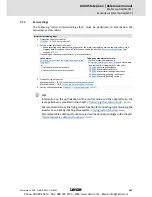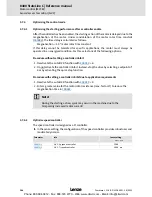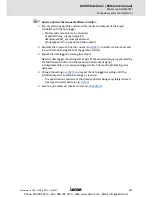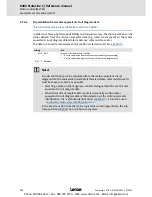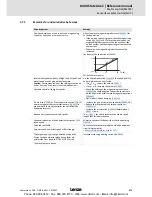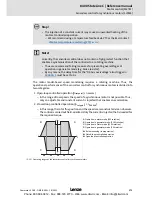
8400 StateLine C | Reference manual
Motor control (MCTRL)
Sensorless vector control (SLVC)
160
L
Firmware
≤
11.00 - DMS 8.0 EN - 10/2011
5.7
Sensorless vector control (SLVC)
Sensorless vector control (SLVC) is based on a better motor current control according to a
field-oriented control mode by Lenze.
Stop!
• The sensorless vector control (SLVC) is only suitable for asynchronous motors.
• The connected motor must not be more than two power classes smaller than
the motor assigned to the controller.
• Operation of the sensorless vector control (SLVC) is only permissible for one
single drive!
• Operation of the sensorless vector control (SLVC) is not permissible for hoists!
• The Lenze setting permits the operation of a power-adapted motor. Optimal
operation is only possible if either:
– the motor is selected via the Lenze motor catalogue
– the motor nameplate data are entered and motor parameter identification
is carried out afterwards
-
or -
– the nameplate data and equivalent circuit data of the motor (motor
leakage inductance and mutual motor inductance, slip compensation and
motor stator resistance) are entered manually.
• When you enter the motor nameplate data, take into account the phase
connection implemented for the motor (star or delta connection). Only enter
the data applying to the selected connection type.
– In this context, also observe the instructions in the chapter entitled
"
Adapting the V/f base frequency
" relating to V/f characteristic control.
(
132)
Note!
Optimal operation of the sensorless vector control (SLVC) can be achieved from
a minimum speed of approx. 0.5-fold slip speed. At lower speed values below the
0.5-fold slip speed, the maximum torque is reduced.
The maximum field frequency with this motor control mode is 650 Hz.
Phone: 800.894.0412 - Fax: 888.723.4773 - Web: www.clrwtr.com - Email: info@clrwtr.com




